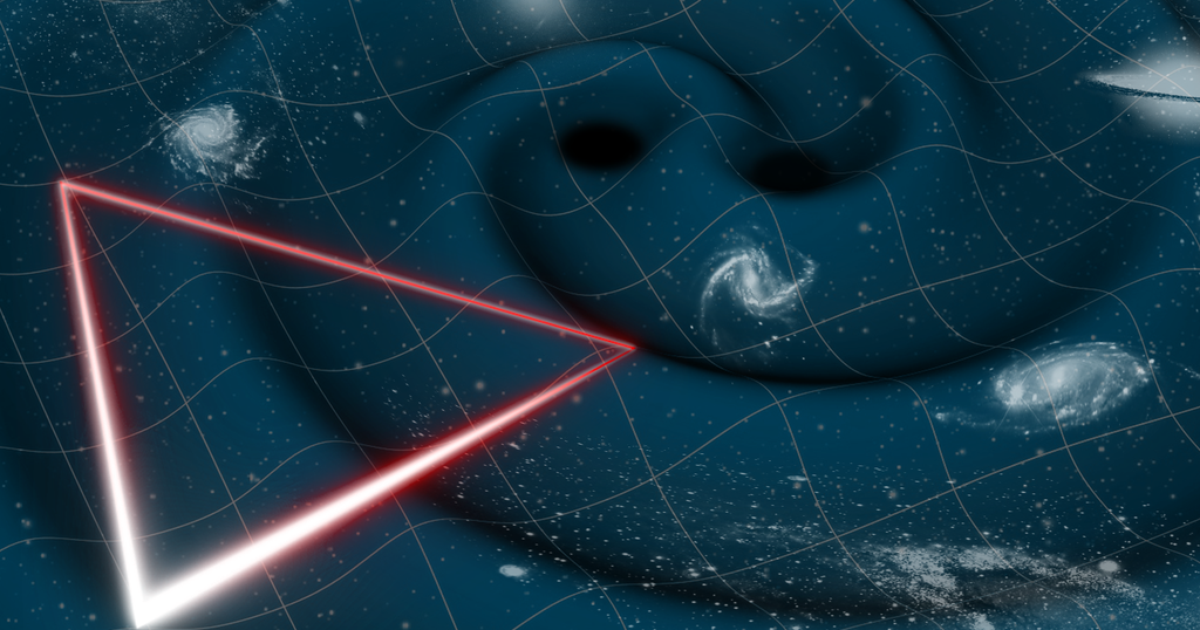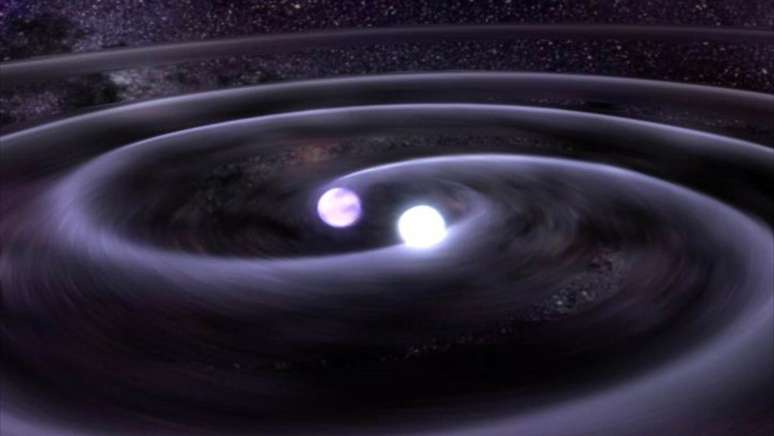A European Space Agency committee has just approved the planning and construction of the LISA mission, which will use lasers to detect gravitational waves
January 30
2024
– 7:13 pm
(Updated 1/31/2024 at 4:46 AM)
study Gravitational waves I just got a nice boost from the European Space Agency (ESA). ESA's Science Program Committee has just approved the planning and construction of the LISA mission, which stands for Laser Interferometer Space Antenna (or Laser Interferometer Space Antenna, literally).
The decision to continue developing LISA represents its adoption, an important step towards the mission becoming a reality. In short, this means that technology necessary, its concept and timeline have been approved, allowing the agency to move on to building the spacecraft and its instruments.
The idea is that LISA is a constellation of three spacecraft, which will move around the Earth in a triangle while our planet It rotates in orbit The sun, and each side of this triangle will be formed by laser beams fired by the spacecraft, which are 2.6 million kilometers long.
This is how gravitational waves would be detected: when any of them crossed the beams, they would cause distortions in the fabric of space-time, and thus in the sides of the triangle. This is the first time gravitational waves have been studied from space.
The spacecraft's onboard LISA instruments will then record the changes and send the data back to Earth. “Thanks to the enormous distance traveled by LISA's laser signals and the excellent stability of its instruments, we will investigate gravitational waves with lower frequencies than is possible on Earth, detecting events on a different scale from the beginning of time,” explained Nora Lutzgendorf. Project scientist at LISA.
After receiving approval, the ESA is free to request and select suppliers for the work, and the assembly process could begin next year. However, the expedition members know that the mission will not be easy. “LISA is an experiment that has never been done before,” Lutzgendorf noted.
What are gravitational waves?
To understand what gravitational waves are, it helps to quickly recall a theory General relativity, by Albert Einstein. He points out that gravity is the result of objects with mass bending the fabric of space-time; The greater the mass, the greater this bending and the effect of gravity.
Therefore, when an object is accelerated in space, its motion creates gravitational waves, which are like ripples in the fabric of space-time. The waves are usually insignificant, but this changes if the accelerating objects are similar black holes Or neutron stars that collided.
When it begins its operations, LISA will be able to detect waves that are formed as a result of collisions between black holes in the hearts of galaxies, allowing scientists to learn about the origin of these objects. It will also be able to identify phenomena closer to us, such as the merger of white dwarfs and neutron stars.
source: European Space Agency
Popular on Canaltech:

“Coffee trailblazer. Social media ninja. Unapologetic web guru. Friendly music fan. Alcohol fanatic.”



